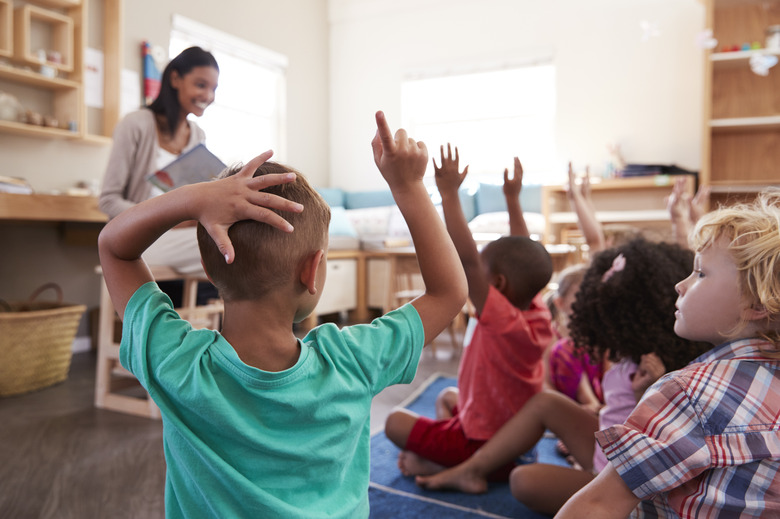How To Teach Rote Counting
Rote counting is one of the most basic math skills; it is taught to preschoolers as a precursor to a meaningful understanding of numbers. Students participate in rote counting activities by reciting numbers – typically from 1 to 10 – from memory. Teaching young children how to count by rote memorization can be taxing since it requires a lot of repetition, and you may run out of engaging activity ideas. To effectively teach this skill and ensure that students absorb counting by rote memorization, use a variety of hands-on approaches that encourage verbal counting.
1. Tossing a Ball
Toss a ball back and forth with students standing in a circle; after a student catches the ball, she must orally state the next number in a sequence. For example, as you toss the ball, say the number "one." The person who catches it says "two" and tosses the ball to another person, who catches the ball and says "three." Continue the process of tossing and counting until reaching the highest number in the sequence on which you are focusing. For instance, if you're focusing on counting from one to 10, stop at the number 10. You can continue the process of tossing and counting, starting over at the number one.
2. Clapping or Singing
Clap to encourage rote counting. Starting with a chosen number, say the number aloud and then clap, and then say the next number in the sequence aloud, and then clap again. Repeat for the entire series, alternating the numbers and claps, along with the students. The rhythm will encourage the students to recite the numbers in rhythm. Alternatively, sing songs that include rote number series, like some nursery rhymes.
3. Counting Blocks
Physically and orally count aloud a collection of blocks to encourage rote counting. Lay a collection of blocks on the floor in a straight line. Point to the first block in the line and say the first number in your series of numbers. Point to the second block in the line and say the next number in the series and so on, until reaching the end of the line of blocks. Upon reaching the last block, go back to the first block and start the process over again. For example, point to the first block and say "one," point to the second block and say "two" and so forth.
4. Challenging Variations
If the students have gained comfort reciting a small series of numbers, such as one to five, you can expand the series to 10, or you can teach them to recite the series in reverse, from five to one. If appropriate to their learning levels, you can also teach them about odd and even numbers, so that they tap one foot when they recite one, do nothing when they recite two, tap a foot again when they recite three, and so on. There are many ways to take the same series of numbers and add slight variations to challenge the students and encourage them to become familiar and comfortable with basic math.
Things Needed
- Ball
- Blocks
Cite This Article
MLA
Mae, Lily. "How To Teach Rote Counting" sciencing.com, https://www.sciencing.com/teach-rote-counting-8685718/. 17 May 2018.
APA
Mae, Lily. (2018, May 17). How To Teach Rote Counting. sciencing.com. Retrieved from https://www.sciencing.com/teach-rote-counting-8685718/
Chicago
Mae, Lily. How To Teach Rote Counting last modified August 30, 2022. https://www.sciencing.com/teach-rote-counting-8685718/
